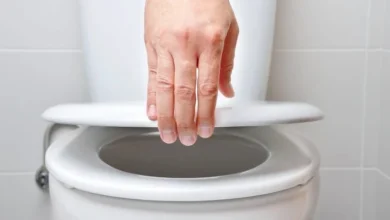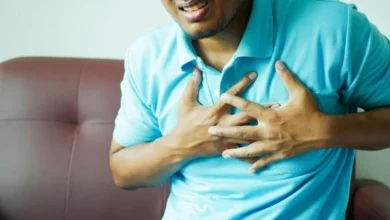Is your back pain a secret sign of heart trouble? Cardiologist explains 3 phases of cardiac arrest

Sudden cardiac arrest (SCA) can happen at any time and causes the heart to stop beating because of irregular electrical activity. Without immediate medical help, SCA can lead to loss of consciousness and stop breathing, often resulting in death.
While many people recognise chest pain as a sign of heart problems, other signs, like back pain, should not be ignored. It is important to know these warning signs and understand the stages of cardiac arrest.
Is back pain a heart attack symptom?
Back painis frequently attributed to factors such as poor posture, muscle strain, or spinal problems. However, it can also serve as a potential indicator of heart trouble. Pain that develops in the upper back, shoulders, or jaw may signal reduced blood flow to the heart, as per the National Heart, Lung and Blood Institute. “Unlike typical muscle pain that arises from movement, cardiac-related back pain often presents itself as a sensation of pressure or heaviness across the upper back”, Dr Vikash Goyal, Senior Consultant Cardiologist, Paras Health, tells Health Shots.
Women often have different symptoms when they experience heart problems. “They may feel back pain, nausea, or unusual tiredness,” explains the cardiologist. This can lead to delays in receiving the correct diagnosis and treatment, so it’s important to be aware of these symptoms. Suppose someone experiences back pain along with dizziness, shortness of breath, or a racing heart. In that case, they should seek medical attention immediately and not ignore these symptoms, as advised by the American Heart Association.
What actually happens during cardiac arrest?
The first thing to understand is that sudden cardiac arrest and a heart attack are different. Many people tend to get confused between the two. “A heart attack occurs when blood flow to the heart muscle is obstructed due to a blocked artery, whereas cardiac arrest results from electrical malfunctions within the heart,” says Dr Goyal. While a heart attack can lead to cardiac arrest, they are distinctly different events.
The symptoms of cardiac arrest usually appear suddenly and can be severe. “Common indicators include collapse, no detectable pulse, and loss of consciousness”, shares Dr Goyal. However, prior warning signs such as palpitations, shortness of breath, dizziness, or chest discomfort may occur. In some cases, unexpected symptoms like pain radiating to the upper back can point to an impending cardiac event, making it important for individuals to stay vigilant as per the American Heart Association.
What are the three phases of cardiac arrest?
“Knowing the stages of cardiac arrest can help save lives,” says the cardiologist. Cardiac arrest happens in three phases, and each stage requires specific actions to improve the chances of survival, as per the American Heart Association.
Electrical phase (0-4 minutes)
In the first four minutes, the heart can have chaotic rhythms. Here, defibrillation or giving an electric shock can be most effective. Acting quickly can increase survival chances. This highlights how important it is to respond promptly.
2. Circulatory phase (4-10 minutes)
When the heart runs low on energy, blood circulation slows down between four and ten minutes. This is the critical time when chest compressions are needed. “Performing high-quality cardiopulmonary resuscitation (CPR) helps keep blood flowing, ensuring that oxygen-rich blood reaches the brain and other important organs until medical help arrives”, explains Dr Goyal.
3. Metabolic phase (after 10 minutes)
The metabolic phase starts after ten minutes without oxygen, causing severe damage to body cells. “At this point, the chances of survival drop seriously, even with medical help,” warns the expert. It is important to recognise symptoms early and act promptly to prevent reaching this dangerous phase, as per the National Institute on Aging.
What are the risk factors for cardiac arrest?
Several factors can increase the risk of sudden cardiac arrest. “Conditions like high blood pressure, diabetes, obesity, smoking, and high cholesterol can harm heart health”, says the expert. A family history of heart disease, previous heart attacks, or congenital heart defects can also make someone more vulnerable, according to the Heart Foundation.
Lifestyle choices are important for heart health. Not getting enough exercise, eating poorly, and abusing substances can harm your heart, according to the Centers for Disease Control and Prevention (CDC). Many of these risks can be prevented or managed. Regular health check-ups, heart screenings, and living a heart-healthy lifestyle, like eating balanced meals and exercising regularly, are key steps to protecting your heart.









